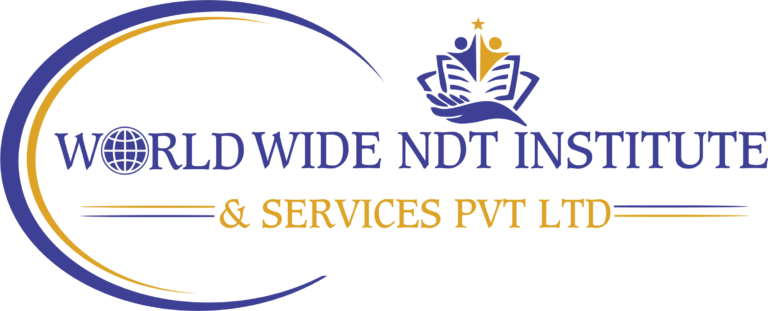Visual inspection is a fundamental method used across various industries to assess the condition, quality, and integrity of materials, components, and structures. It involves the visual examination of surfaces, welds, assemblies, and products to detect defects, anomalies, or irregularities that may affect performance, safety, or compliance with standards. In this comprehensive guide, we delve into the different types of visual inspection techniques, their applications, advantages, and limitations in industrial settings.
Introduction to Visual Inspection
Visual inspection serves as the first line of defense in quality control, maintenance, and safety protocols across industries such as manufacturing, construction, aerospace, automotive, and electronics. It encompasses a wide range of techniques and methodologies, each tailored to specific inspection requirements and objectives. While some visual inspection methods rely solely on human visual acuity and judgment, others leverage advanced technologies such as cameras, microscopes, and imaging systems to enhance inspection capabilities.
Types of Visual Inspection Techniques
- Direct Visual Inspection:
- Direct visual inspection involves the direct observation of surfaces, components, or products by trained inspectors using the naked eye or with the aid of handheld magnifying devices. This method is commonly used for detecting surface defects, scratches, dents, discolorations, and other visible imperfections that may compromise quality or functionality. Direct visual inspection is versatile and cost-effective, making it suitable for a wide range of applications across industries.
- Remote Visual Inspection (RVI):
- Remote visual inspection involves the use of specialized cameras, fiberscopes, borescopes, or robotic systems to inspect areas that are inaccessible or hazardous for human operators. RVI techniques allow inspectors to remotely view and capture images or videos of internal surfaces, cavities, pipes, and machinery without the need for disassembly or physical access. This method is particularly valuable for inspecting confined spaces, pipelines, turbines, and complex machinery in industries such as aerospace, oil and gas, and power generation.
- Microscopic Inspection:
- Microscopic inspection utilizes optical or electron microscopes to magnify and visualize surface features, defects, or microstructures at a microscopic level. This method is commonly employed for examining small components, electronic circuits, welds, and material surfaces with high precision and resolution. Microscopic inspection enables inspectors to detect sub-surface cracks, voids, grain boundaries, and other microscopic anomalies that may not be visible to the naked eye.
- Surface Roughness Inspection:
- Surface roughness inspection involves the measurement and evaluation of surface texture, finish, and roughness parameters using profilometers, surface roughness testers, or visual comparison standards. This method is crucial for assessing the quality of machined parts, metal surfaces, and finished products, as surface roughness can affect friction, wear, corrosion resistance, and aesthetics. Surface roughness inspection helps ensure compliance with dimensional tolerances and surface finish requirements specified in engineering standards and specifications.
- Fluorescent Penetrant Inspection (FPI):
- Fluorescent penetrant inspection is a non-destructive testing method used to detect surface-breaking defects such as cracks, porosity, and discontinuities in non-porous materials. FPI involves applying a fluorescent penetrant solution to the surface of the test object, allowing it to seep into any surface defects through capillary action. After excess penetrant removal and developer application, the defects fluoresce under UV or black light, making them visible for inspection. FPI is widely used in aerospace, automotive, and manufacturing industries for detecting surface defects in critical components and structures.
- Dye Penetrant Inspection (DPI):
- Dye penetrant inspection is a surface inspection method similar to FPI, but it uses visible dye penetrants instead of fluorescent ones. DPI is used to detect surface defects such as cracks, laps, seams, and porosity in non-porous materials. The process involves applying a colored dye penetrant to the surface, allowing it to penetrate surface defects, followed by excess penetrant removal and developer application. The colored penetrant highlights defects against the background surface, facilitating visual inspection. DPI is commonly employed in welding, casting, and forging industries for quality control and defect detection.
- Ultrasonic Testing (UT) with Visual Component:
- Ultrasonic testing is a volumetric inspection method that utilizes high-frequency sound waves to detect internal defects, discontinuities, and thickness variations in materials. While UT is primarily a volumetric inspection technique, it often incorporates a visual component to assist with defect localization, sizing, and characterization. Inspectors visually monitor ultrasonic waveforms, A-scan displays, and indications on a screen to identify defects and anomalies in real-time. UT with visual component is widely used in weld inspection, corrosion mapping, and flaw detection applications across industries.
- Infrared Thermography (IRT):
- Infrared thermography is a non-contact inspection technique that utilizes infrared cameras to capture and visualize thermal patterns emitted by objects. IRT is used to detect anomalies such as heat differentials, thermal gradients, and hot spots caused by defects, insulation failures, or equipment malfunctions. In industrial applications, IRT is employed for predictive maintenance, electrical inspections, building diagnostics, and process monitoring. Visual interpretation of infrared images allows inspectors to identify abnormal temperature patterns indicative of potential issues or failures.
Applications and Advantages of Visual Inspection Techniques
Visual inspection techniques find widespread application across various industries and sectors, including:
- Manufacturing: Quality control, defect detection, and process monitoring in production lines.
- Aerospace: Inspection of aircraft components, engines, and structures for defects and damage.
- Automotive: Quality assurance, weld inspection, and assembly verification
